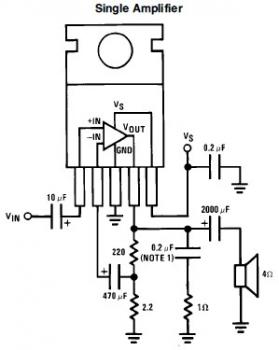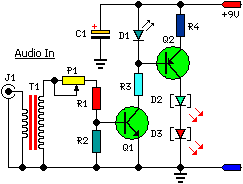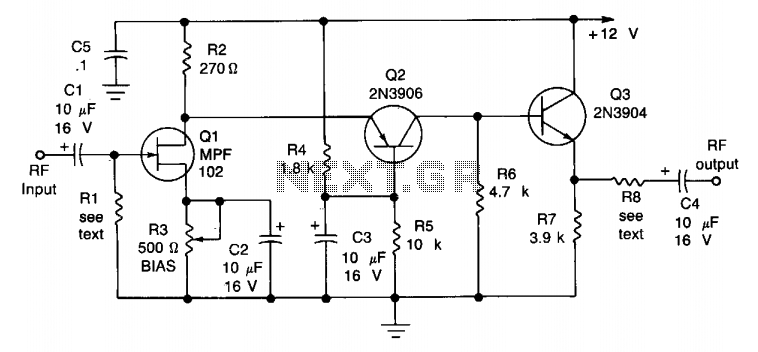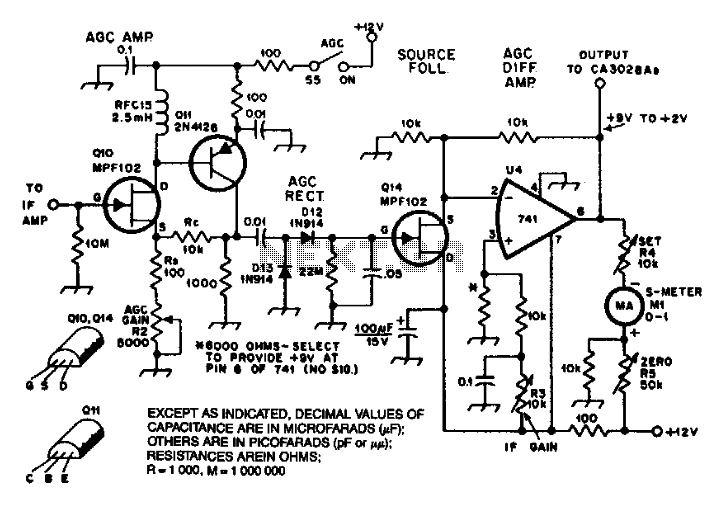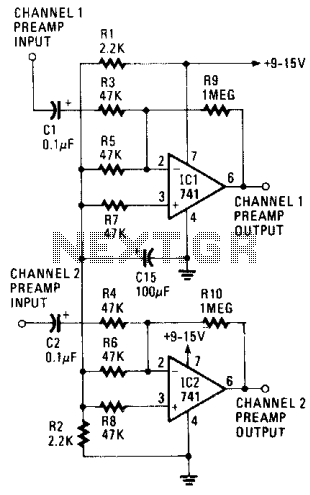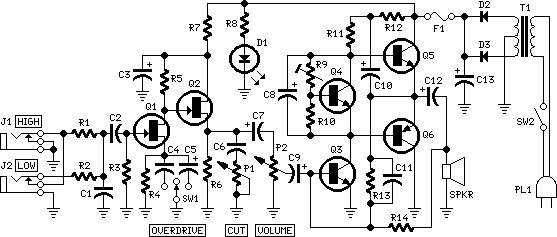
Color video amplifier
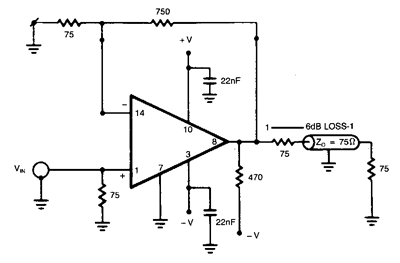
The NE5539 wideband operational amplifier can be readily utilized as a color video amplifier. The gain remains stable, varying less than 0.5% from the minimum to the maximum of the specified range. The maximum differential phase shift is around 0.1 degrees. The amplifier circuit has been optimized for a 75-ohm input and output termination impedance, achieving a gain of approximately 10 (20 dB).
The NE5539 is a high-performance operational amplifier designed for applications requiring wide bandwidth and low distortion. In the context of color video amplification, its specifications make it particularly suitable for processing video signals, where fidelity and precision are critical. The low variation in gain ensures consistent performance across the operational range, which is vital for maintaining image quality in video applications.
The circuit configuration typically includes feedback components that establish the gain at the desired level of 10 (20 dB), while the 75-ohm termination impedance is crucial for matching the amplifier to standard video transmission lines, minimizing reflections and signal loss. The differential phase shift of approximately 0.1 degrees indicates that the amplifier maintains phase integrity across its operational bandwidth, which is essential for color fidelity in video signals.
In practical applications, careful attention should be paid to the layout of the circuit to minimize noise and crosstalk, especially in high-frequency environments. Proper decoupling capacitors should be placed close to the power supply pins of the NE5539 to ensure stable operation. Additionally, the choice of resistors and capacitors in the feedback network should consider the frequency response to optimize the amplifier's performance for specific video signal characteristics. Overall, the NE5539 provides a robust solution for color video amplification, ensuring high-quality signal processing in various electronic systems.The NE5539 wideband op amp is easily adapted for use as a color video amplifier. The gain varies less than 0.5% Irom the bottom to the top of the staitVlse. The maximum differential phase is approximately 0.1. The amplifier circuit was optimized for a 75-ohm input and output termination impedance for a gain of approximately 10 (20 dB) 🔗 External reference
The NE5539 is a high-performance operational amplifier designed for applications requiring wide bandwidth and low distortion. In the context of color video amplification, its specifications make it particularly suitable for processing video signals, where fidelity and precision are critical. The low variation in gain ensures consistent performance across the operational range, which is vital for maintaining image quality in video applications.
The circuit configuration typically includes feedback components that establish the gain at the desired level of 10 (20 dB), while the 75-ohm termination impedance is crucial for matching the amplifier to standard video transmission lines, minimizing reflections and signal loss. The differential phase shift of approximately 0.1 degrees indicates that the amplifier maintains phase integrity across its operational bandwidth, which is essential for color fidelity in video signals.
In practical applications, careful attention should be paid to the layout of the circuit to minimize noise and crosstalk, especially in high-frequency environments. Proper decoupling capacitors should be placed close to the power supply pins of the NE5539 to ensure stable operation. Additionally, the choice of resistors and capacitors in the feedback network should consider the frequency response to optimize the amplifier's performance for specific video signal characteristics. Overall, the NE5539 provides a robust solution for color video amplification, ensuring high-quality signal processing in various electronic systems.The NE5539 wideband op amp is easily adapted for use as a color video amplifier. The gain varies less than 0.5% Irom the bottom to the top of the staitVlse. The maximum differential phase is approximately 0.1. The amplifier circuit was optimized for a 75-ohm input and output termination impedance for a gain of approximately 10 (20 dB) 🔗 External reference
